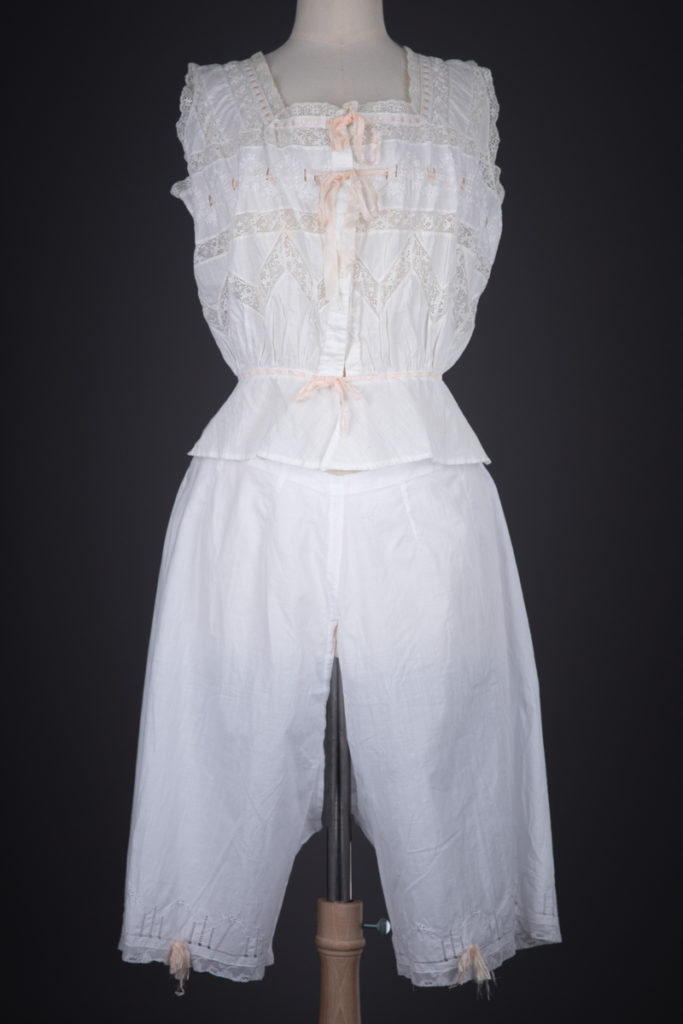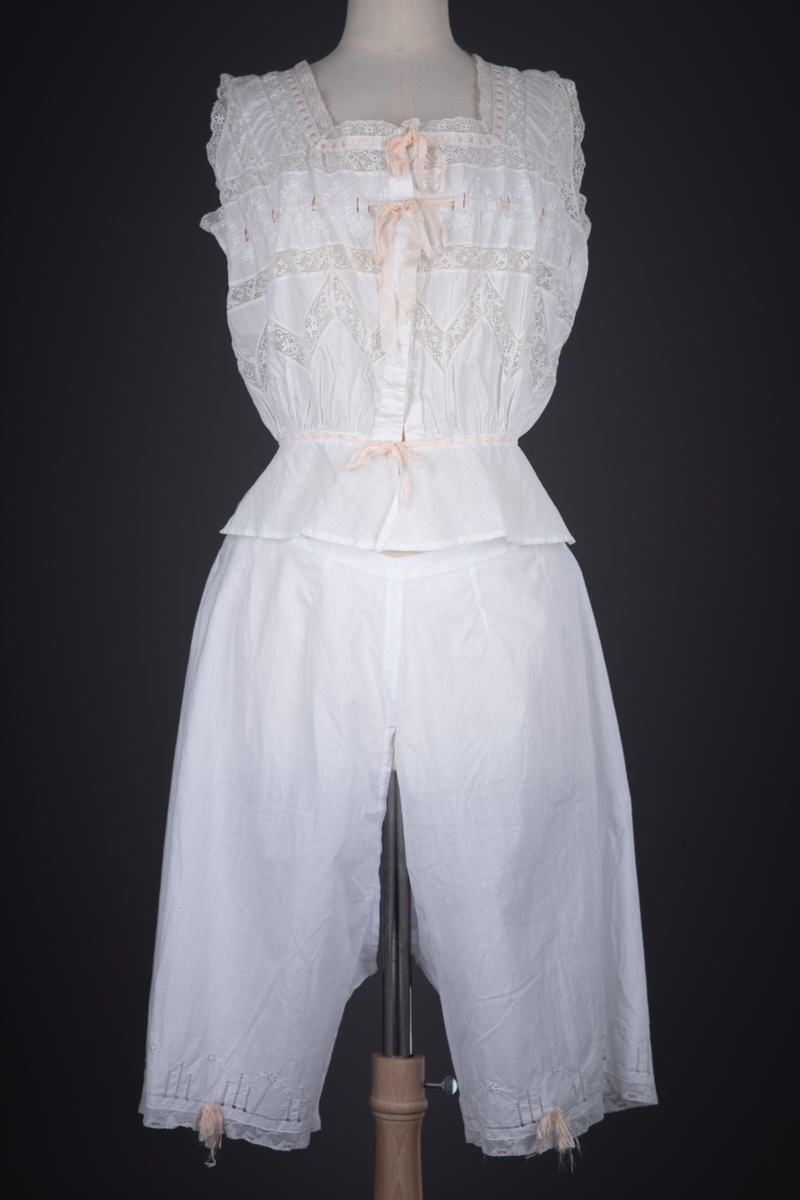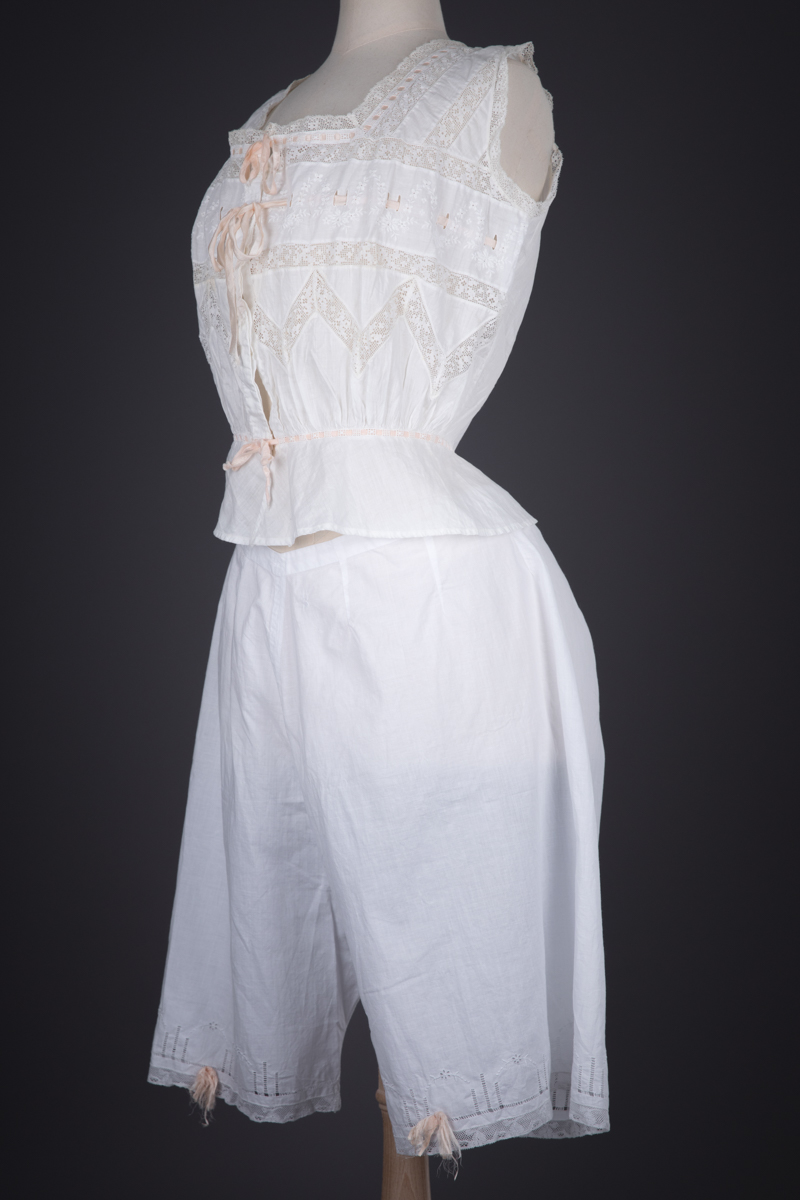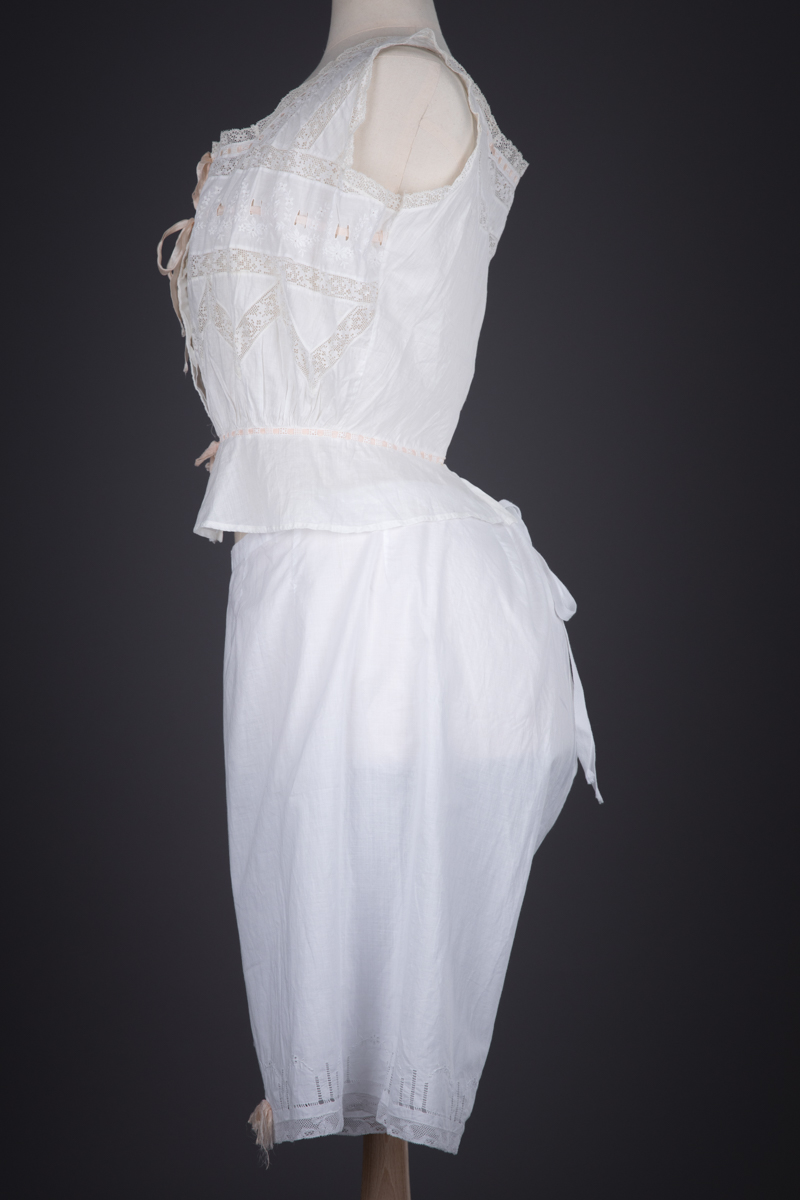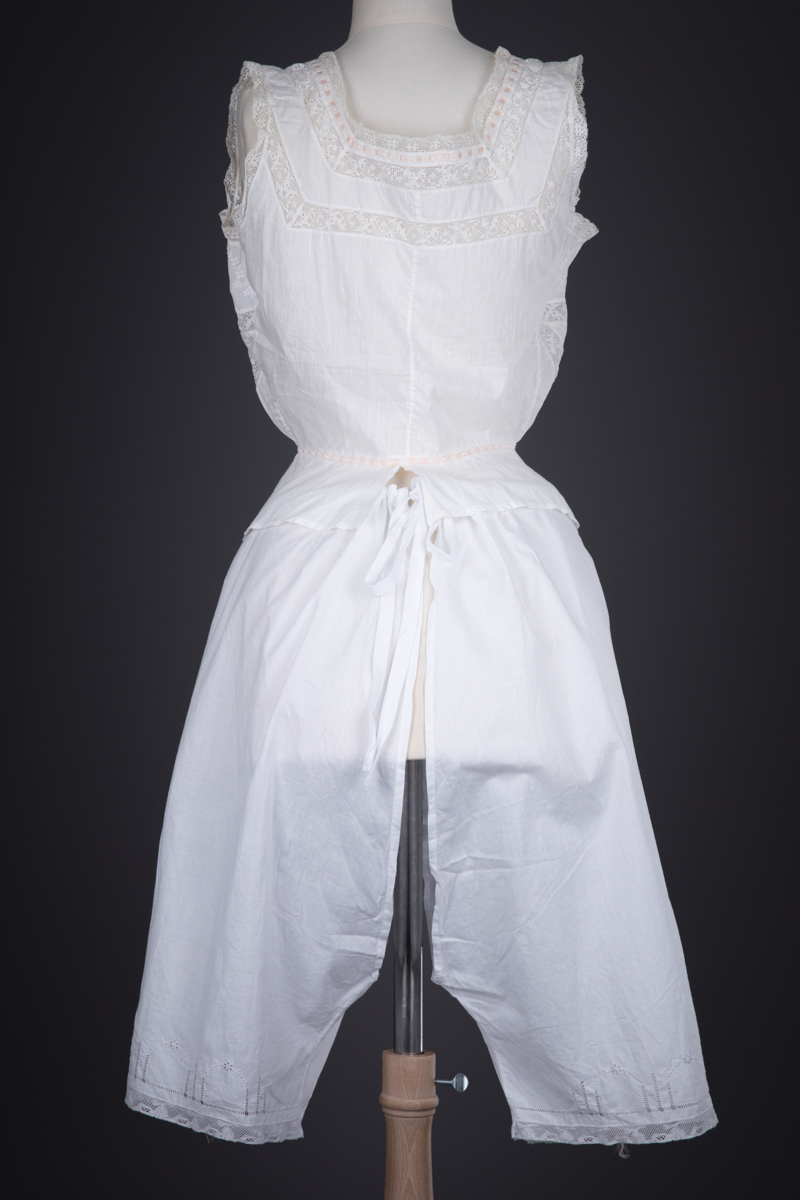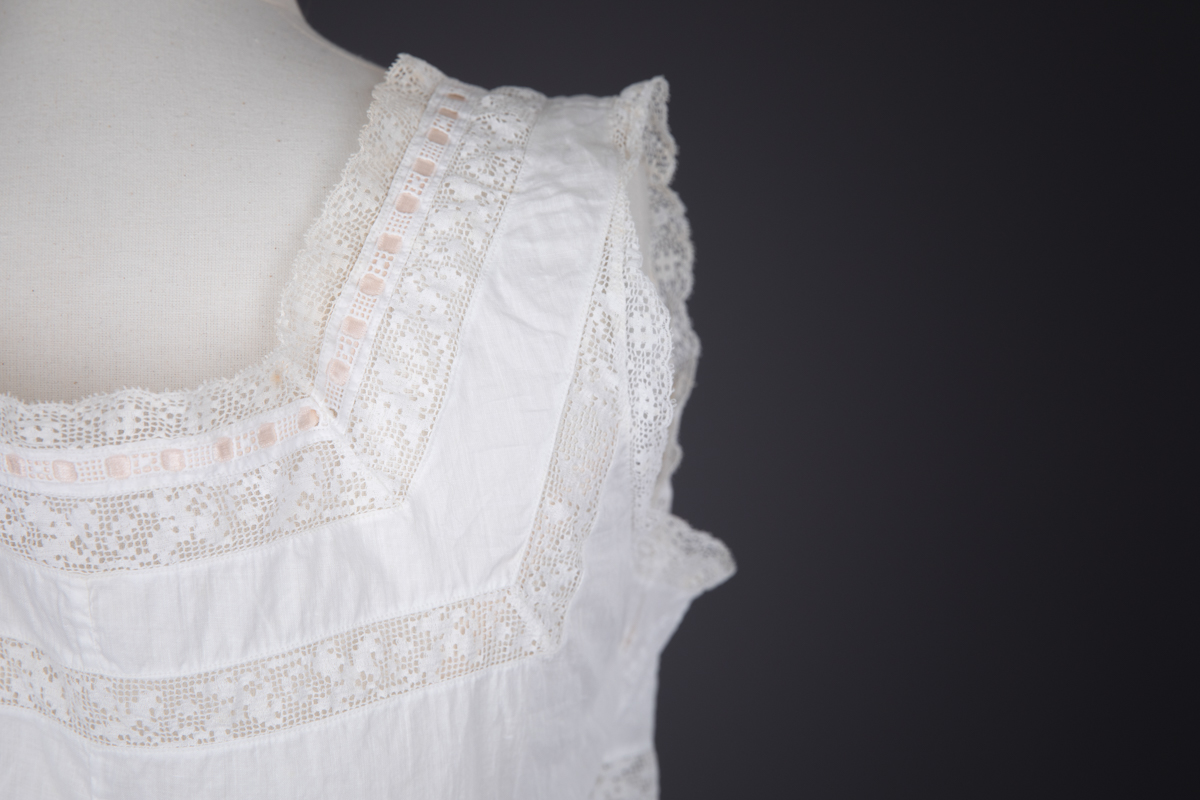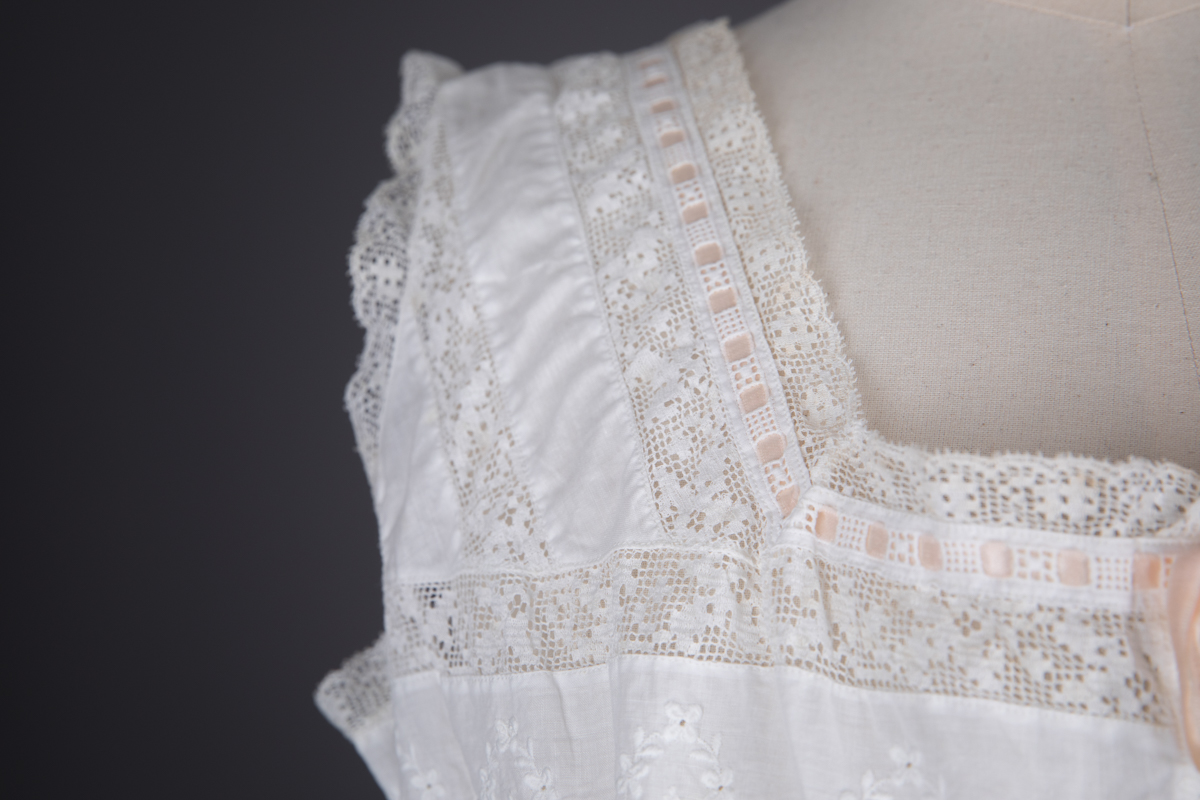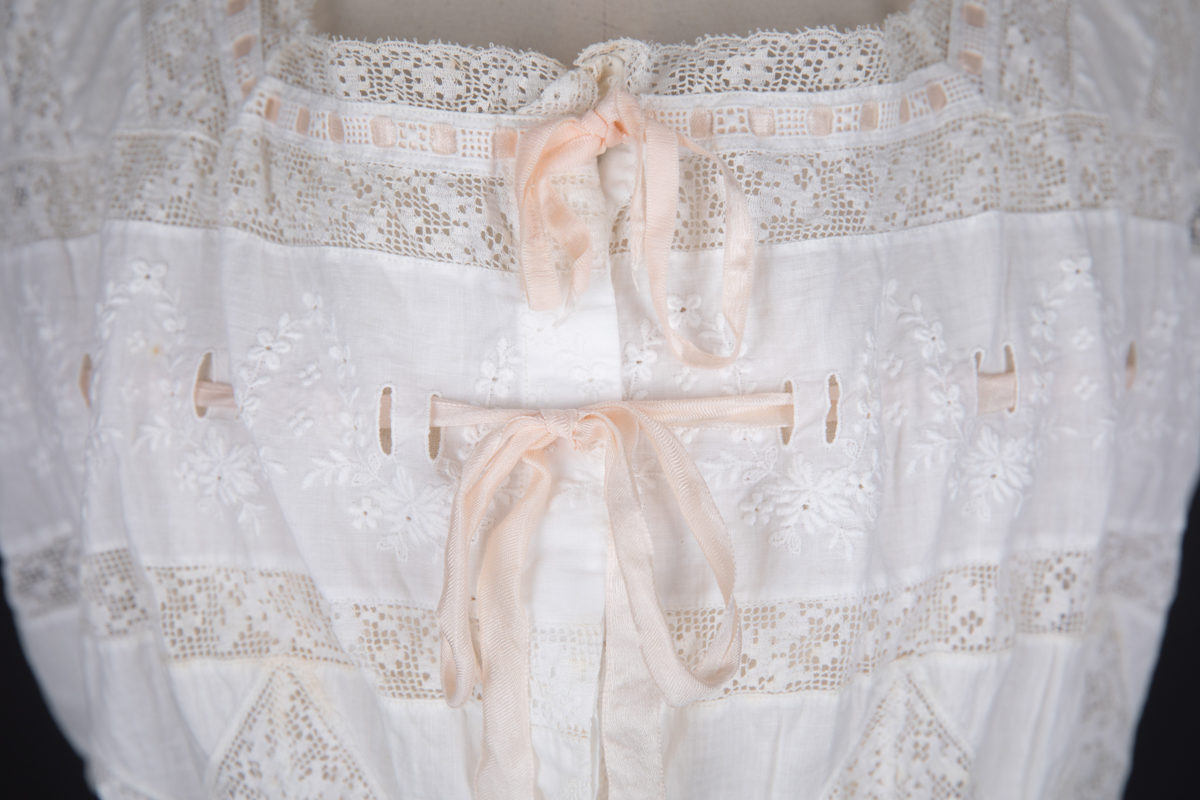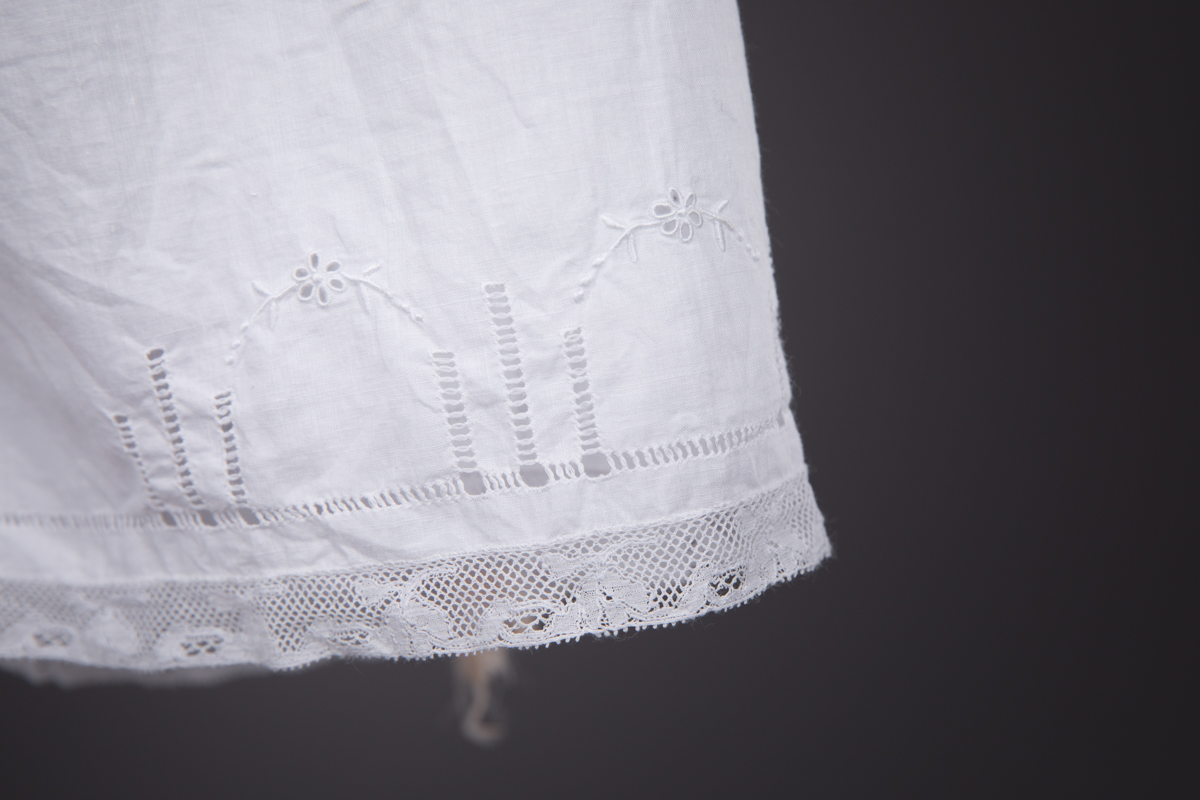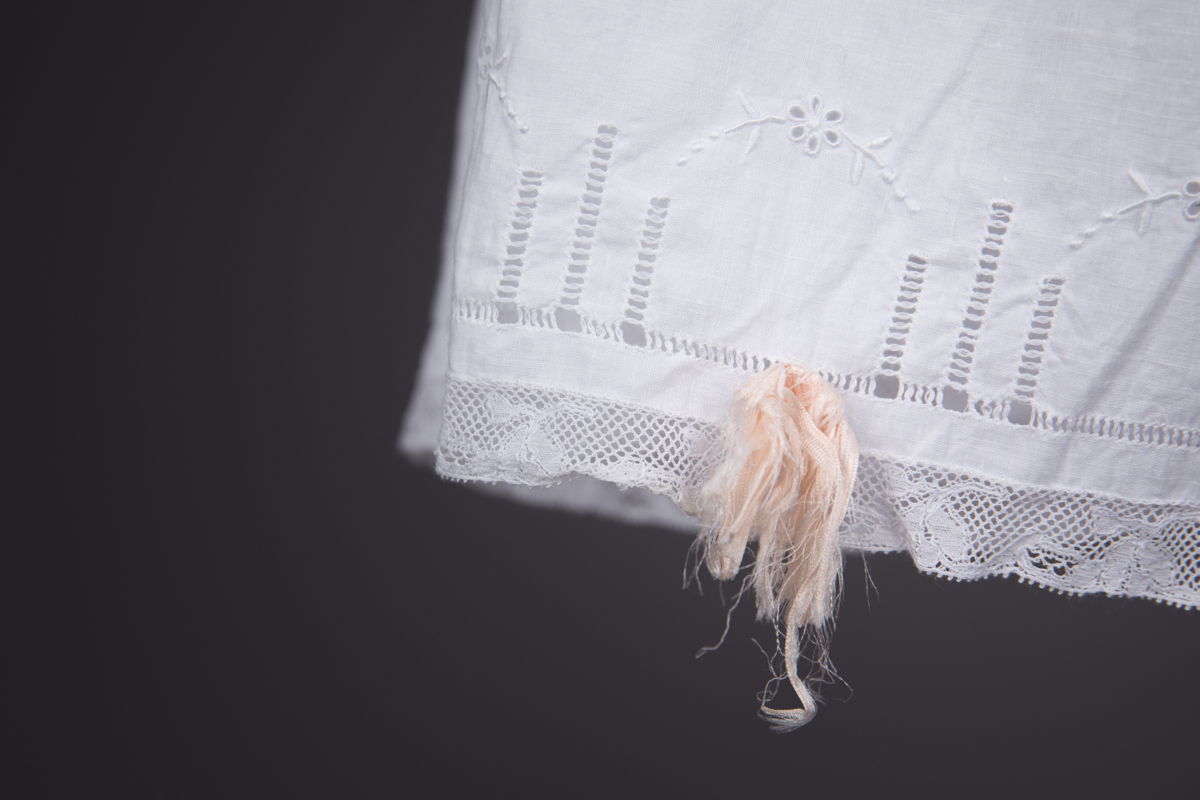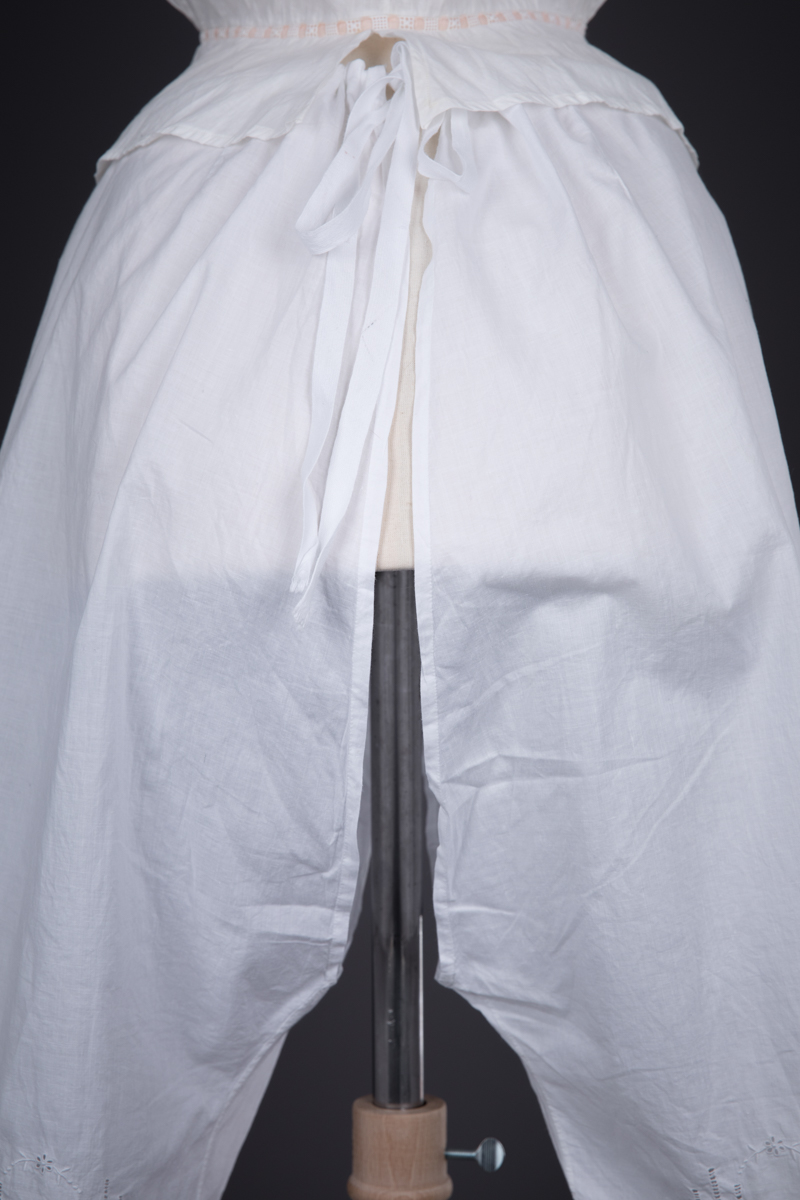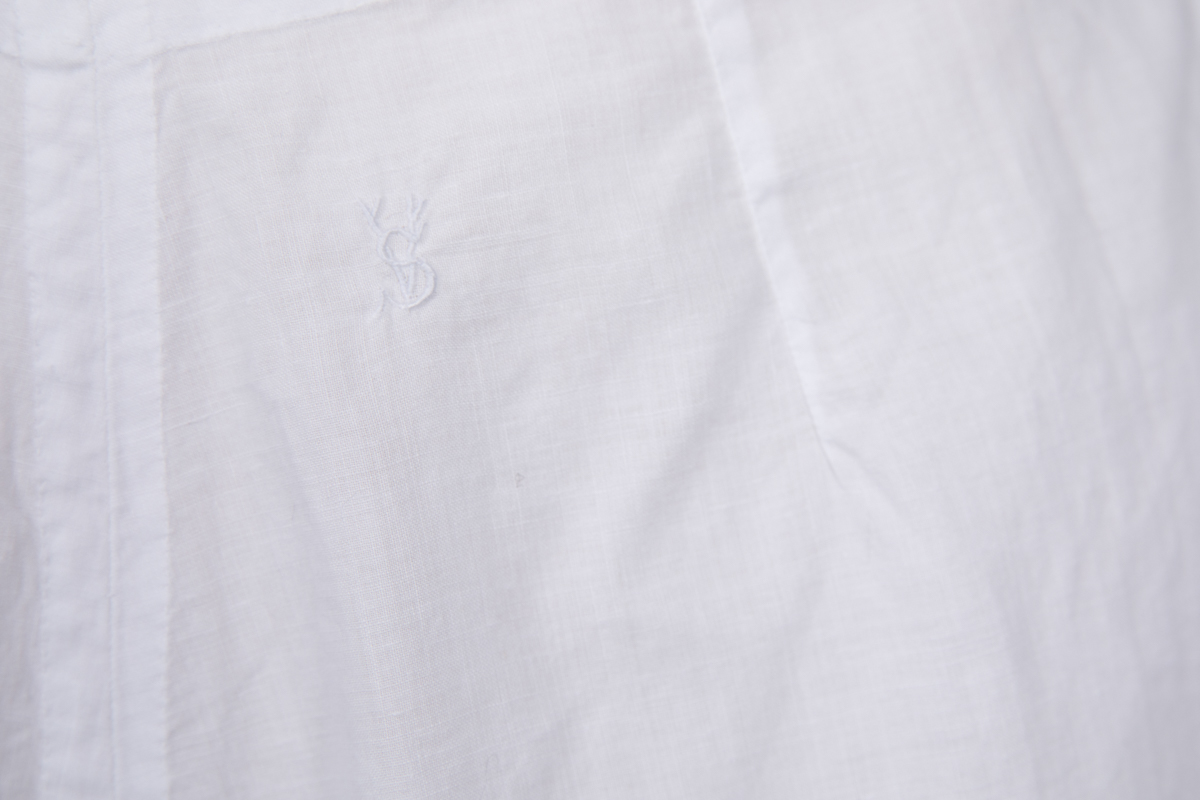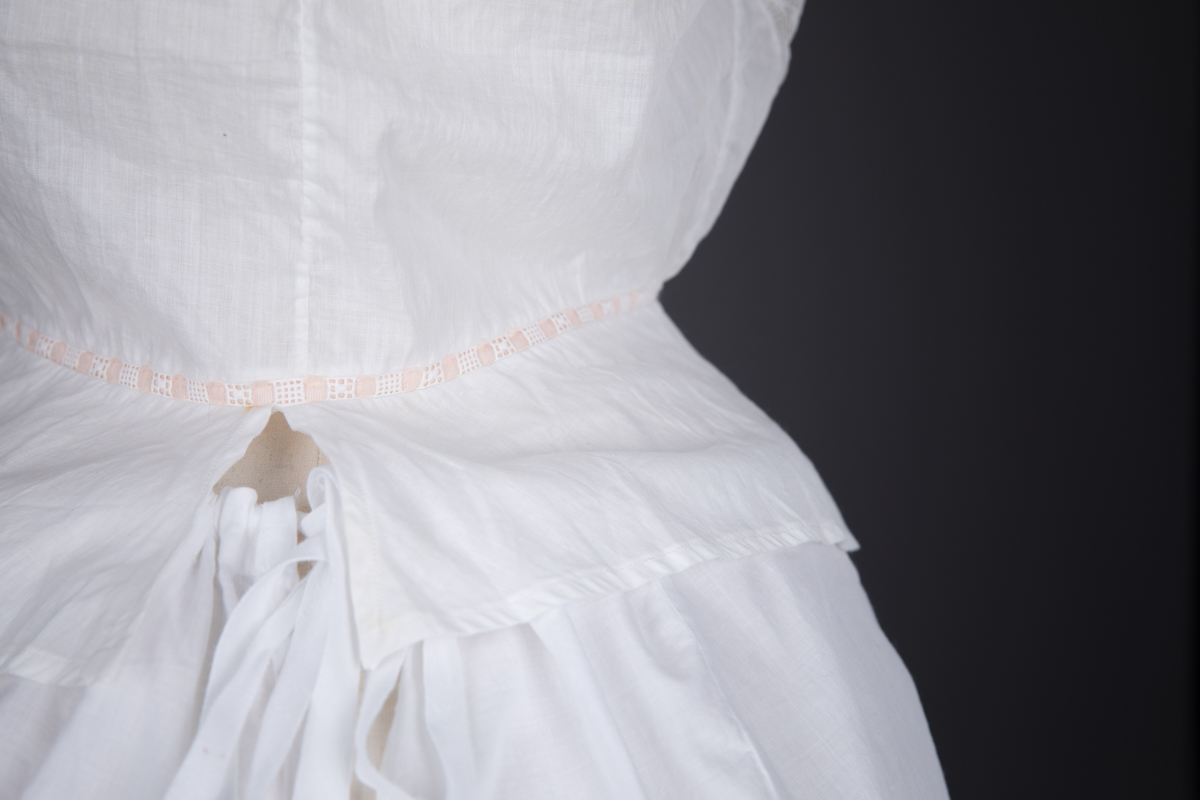Date: c. 1880-1890s
Origin: Great Britain
Fabric: Cotton
Brand: Custom made
A corset cover and pair of split drawers in fine cotton lawn with intricate embellishments and lace trims. These garments were not originally from the same set or owner, but have similar enough fabrics and embellishments to warrant styling them together.
The corset cover is fitted at the waist, with silk ribbon slot trim at the waist and bustlines allowing a small level of fit adjustability. It fastens with shell buttons and embroidered buttonholes behind a cotton placket. It is profusely embellished, with filet insertion lace appliqué at the neck and bustline and whitework floral embroidery. The back of the corset cover is split at the waistline, presumably to accommodate the additional volume of the fashionable bustle silhouettes of the period. Such a garment would have ordinarily been worn over a corset to conceal the corset colour and lines from showing through outer garments (corsets were often brightly coloured, and hardware such as busks and petticoats could create unsightly lines through fine fabrics).
The split drawers have more subdued embellishment, with the leg cuffs decorated with whitework embroidery, drawn thread work, Valenciennes lace trim and small silk bows. The centre waist features a small embroidered ‘VS’ monogram. The drawers are open through the entire centre seam, and fasten with a drawstring at the centre back. Split drawers were commonly worn until well into the 1920s, with the open cut a functional necessity when worn with the multiple heavy layers of outerwear fashion.
During this time period, underwear that was worn against the skin was usually made of fabrics such as linen and cotton for ease of washing; laundry was usually a relatively harsh process, with strong soaps and boiling water. Undergarments would absorb sweat and bodily oils, and were washed often, as it was difficult to effectively clean the more delicate fabrics of outer garments. Such garments would also act as a lining to corsets, which could not be washed at all.
From the collection of Karolina Laskowska
